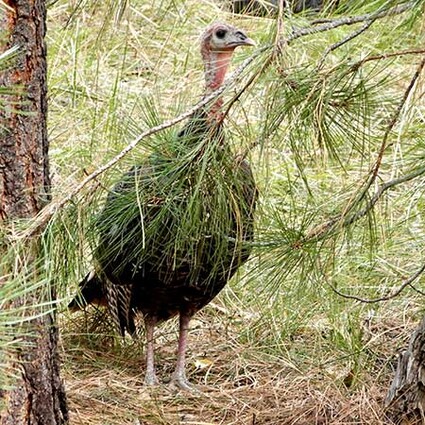Thanksgiving traditions and turkey
Last updated 11/24/2020 at Noon
Nothing evokes the image of Thanksgiving more dramatically than a turkey. So, when a flock of 18 wild turkeys wandered through my yard the other day, I saw it as an appropriate harbinger of the approaching holiday.
Traditionally, we’re taught that Thanksgiving dates back to the Pilgrims at Plymouth in 1621. While that’s not exactly wrong, it’s not really the whole story, either. First off, the term “Pilgrim” didn’t even come into common usage until the nineteenth century, and things like those silly buckle hats are pure fiction.
As far as the origins of Thanksgiving, European autumnal celebrations and feasts are so old that they actually predate Christianity. Further, the first such celebrations by Europeans, in what is now the continental U.S., reportedly took place in Spanish-speaking Florida a hundred years before the Pilgrims, but such is the nature of our white, Anglocentric biases in the recounting of history.
The biggest historical disappointment, however, is that turkey probably wasn’t even on the English colonial menu at all in 1621. While it is not impossible that turkey was on the original menu — after all, wild turkeys were native to that area — it is believed that waterfowl, most likely ducks and geese, were the actual menu offerings — in addition to lobster!
We do know for certain from recorded history, however, that venison was served when members of the local Wampanoag native tribe contributed five deer to the feast. However, contrary to tradition, they weren’t exactly invited guests. The indigenous people showed up out of curiosity when they came to investigate celebratory gun and cannon fire marking the settlement’s three-day harvest festival. Historical accounts also typically ignore the rather severe deterioration of relations between the natives and Pilgrims in the succeeding years.
Like the term “Pilgrim,” turkey as the holiday’s main dish did not begin to find its way into Thanksgiving tradition until the 19th century.
The first governmentally sanctioned Thanksgiving in America took place in 1777, when a Continental Congress proclamation celebrating Revolutionary War successes led to a December observance that year. President George Washington proclaimed a day of Thanksgiving in October of 1789 and again in February of 1795. The practice was periodically continued over the next several decades but was not permanently established until Abraham Lincoln did so in 1863, during the Civil War.
Another historical misconception is the oft-told tale that Benjamin Franklin proposed the turkey as the national symbol in place of the eagle. While Franklin did defend the turkey as “a much more respectable bird...though a little vain and silly…,” he never proposed elevating it to be the national symbol.
Turkey went on to solidify its position as Thanksgiving’s top entree choice in the early 1900s. The last Thursday of November was the chosen date until President Franklin D. Roosevelt moved it up a week in 1939 when November had five Thursdays. Reportedly, his reasoning was to stimulate the Depression economy by providing another week for merchant sales before Christmas. In 1942, the fourth Thursday became the holiday’s permanent date.
Your opportunity to enjoy a wild turkey for this year’s Thanksgiving is rather limited. Unless you’ve kept a frozen wild turkey from the local spring hunting season, you may be out of luck. Although the eastern Oregon fall turkey season is open now, it is closed for the Sisters area, specifically in the Metolius and Upper Deschutes Wildlife Management Units.
Turkeys are not native to Oregon and were introduced into the state in the 1960s, primarily from the Rocky Mountain states. My first sighting of one occurred in the 1980s, while I was deer hunting in the western part of the Metolius Unit. Early releases in this area focused primarily on Green Ridge. The first statewide turkey season opened in 1987.
Several years ago, I heard that the flock along Camp Polk Road was trapped in southern Oregon and relocated here in response to overpopulation and pest complaints. ODFW could not confirm exactly where the local turkeys came from but did confirm relocations to Central Oregon from overpopulated habitat in the Roseburg and John Day areas. The predominant wild turkey species in our area prefers habitat on the fringes of forest and meadow.
I’ve heard mixed reports on the meat quality of the wild birds. Some say they are tough, stringy, and gamey tasting, while others report excellent results with proper care and meat preparation. For best results, however, the vast majority of Thanksgiving celebrants will most likely be heading to the grocery store for a commercially raised domestic turkey.
If you still have your heart set on Wild Turkey for this Thanksgiving, however, your only sure bet is going to be at the liquor store.

















Reader Comments(0)